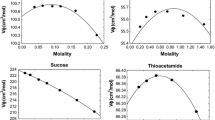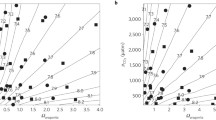Abstract.
Marine phytoplanktonic cells can achieve neutral buoyancy only if the excess density of their relatively heavy structural materials (proteins, carbohydrates, silicate) is compensated for by the incorporation of materials that have densities less than seawater. We have calculated densities and osmotic concentrations for several marine algae, based on published values of structural materials and concentrations of inorganic ions and other osmolytes. The calculations, incorporating the partial molal volume, molecular mass, concentrations and osmotic coefficients, indicate that most published listings of intracellular osmolytes in marine algae are insufficient to provide the turgor known to exist. Similarly, the density of phytoplanktonic cells, calculated on the basis of known or estimated concentrations of cellular components, generally exceeds the density of seawater, which would cause negative buoyancy (sinking) throughout. We use models of osmotic concentration and cellular density in which we supplement known concentrations of osmolytes with proxy osmolytes. In particular, concentrations of some 100 mol m–3 of quaternary ammonium derivatives can explain the deficits of both osmotic concentration and buoyancy.
Similar content being viewed by others
Author information
Authors and Affiliations
Additional information
Electronic Publication
Rights and permissions
About this article
Cite this article
Boyd, .C., Gradmann, .D. Impact of osmolytes on buoyancy of marine phytoplankton. Marine Biology 141, 605–618 (2002). https://doi.org/10.1007/s00227-002-0872-z
Received:
Accepted:
Issue Date:
DOI: https://doi.org/10.1007/s00227-002-0872-z




